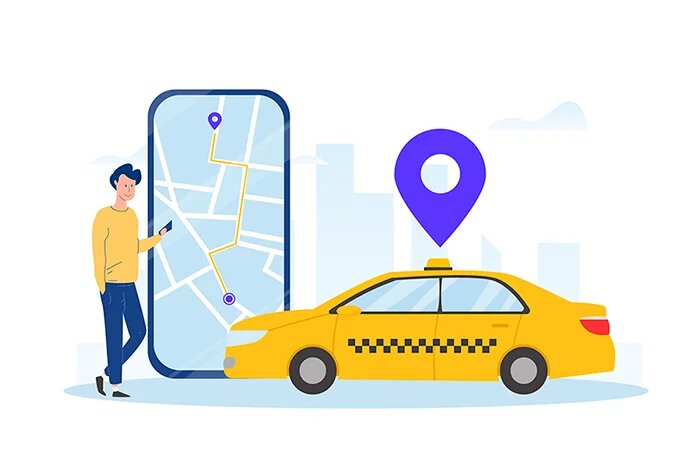Reducing Traffic Congestion with Smart Taxi App Solutions

Table of Contents
In today’s rapidly urbanizing world, traffic congestion has become a pressing issue, leading to wasted time, increased pollution, and a host of other problems. However, smart taxi app solutions are emerging as a promising avenue to alleviate this congestion. In this article, we will delve into how these innovative technologies can help in reducing traffic congestion and explore the steps to create a taxi app similar to Uber.
Efficient Routing and Navigation
One of the key contributors to traffic congestion is inefficient routing. Smart taxi apps utilize advanced navigation algorithms that optimize routes in real-time, considering factors such as traffic conditions, road closures, and time of day. By offering drivers and passengers optimal routes, these apps can significantly reduce congestion on roadways.
Ride-sharing and Carpooling
Ride-sharing and carpooling functionalities within taxi apps play a vital role in traffic reduction. By connecting passengers with similar destinations, these apps minimize the number of individual vehicles on the road. This not only reduces traffic but also promotes a more sustainable and eco-friendly mode of transportation.
Dynamic Pricing to Influence Travel Patterns
Smart taxi apps employ dynamic pricing, which adjusts fares based on demand and supply. During peak traffic hours, higher fares can encourage users to choose alternative travel times, thereby distributing traffic more evenly throughout the day. This can help alleviate congestion during traditionally crowded periods.
Integration with Public Transportation
Creating synergies between taxi apps and public transportation systems can offer commuters more flexible options for their journeys. By seamlessly integrating with buses, trains, and other forms of public transit, taxi apps can provide a comprehensive, interconnected travel experience that encourages people to leave their cars at home.
Promotion of Electric and Hybrid Vehicles
Many smart taxi app solutions are focusing on introducing electric and hybrid vehicles into their fleets. By incentivizing drivers to use eco-friendly vehicles, these apps contribute to reduced emissions and air pollution, which are major contributors to congestion-related issues.
Real-time Traffic Updates and Alerts
To empower both drivers and passengers with up-to-date information, taxi apps offer real-time traffic updates and alerts. Drivers can proactively avoid congested areas, while passengers can make informed decisions about travel times and routes, collectively helping to mitigate traffic jams.
Collaboration with City Planners
Smart taxi app providers can collaborate with city planners and local authorities to analyze traffic patterns and congestion hotspots. This partnership can lead to data-driven solutions for optimizing traffic flow, identifying areas for infrastructure improvements, and implementing effective traffic management strategies.
User Incentives for Off-Peak Travel
To further discourage congestion during peak hours, taxi apps can introduce user incentives such as discounts or loyalty rewards for choosing off-peak travel times. This approach can motivate travelers to adjust their schedules, leading to a more evenly distributed flow of traffic.
Advanced AI and Machine Learning Algorithms
The heart of a smart taxi app lies in its advanced AI and machine learning algorithms. These technologies continuously analyze and predict traffic patterns, user behavior, and demand to make real-time recommendations that optimize travel routes and contribute to reduced congestion.
The creation of an Uber-like taxi app
If you’re interested in create a taxi app like Uber, here are some essential steps to consider: a. Market Research: Understand the target audience, competition, and market trends. b. App Design and Development: Create an intuitive, user-friendly app interface with features like ride booking, payment processing, and real-time tracking. c. Partnering with Drivers: Recruit and onboard drivers who meet your app’s quality standards. d. Implementing Advanced Technologies: Integrate GPS, mapping, and payment processing systems, as well as AI algorithms for route optimization and dynamic pricing. e. Ensuring Regulatory Compliance: Navigate legal and regulatory requirements for transportation services in your target locations. f. Launch and Marketing: Roll out your app with a strategic marketing campaign to attract users and drivers. g. Continuous Improvement: Gather user feedback and data insights to enhance app performance, features, and user experience.
Conclusion
Smart taxi app solutions have the potential to make a significant impact on reducing traffic congestion by optimizing routes, encouraging ride-sharing, and integrating with public transportation. By creating a taxi app similar to Uber, entrepreneurs can contribute to the reduction of traffic congestion while providing users with convenient, reliable, and eco-friendly transportation options. Embracing advanced technologies and collaborating with city planners can lead to a future where urban mobility is more efficient and sustainable.




